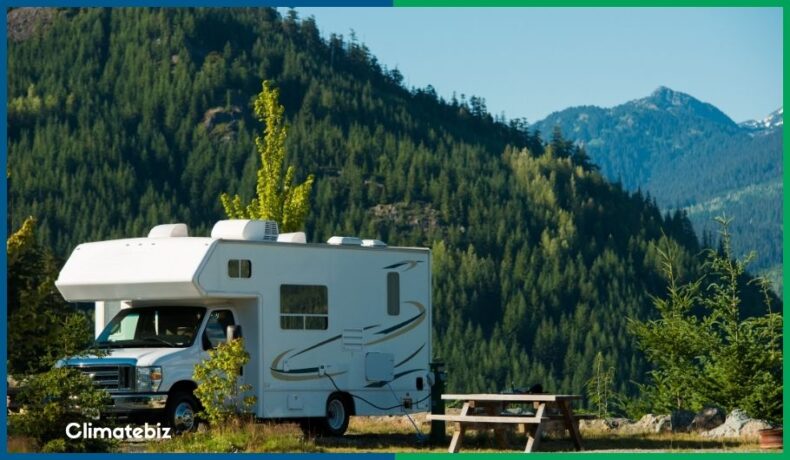An RV solar system can provide you with all the energy you need to run appliances, lights, and other electronics while on the road.
Whether you’re a full-time RVer or enjoy taking your RV out for weekend getaways, going solar is a great way to reduce your environmental impact and save money on your energy costs.
By the end of this guide, you’ll be an RV solar system expert and be well on your way to going off-grid!
Table of Contents
What Is An RV Solar System?
A typical RV solar system includes solar panels, a charge controller, mounts, cabling, and battery storage. These components work in unison, collecting sunlight and converting it into electricity used by the RV’s appliances and lights.
The size of an RV solar system will depend on power demand and the amount of sun the RV receives.
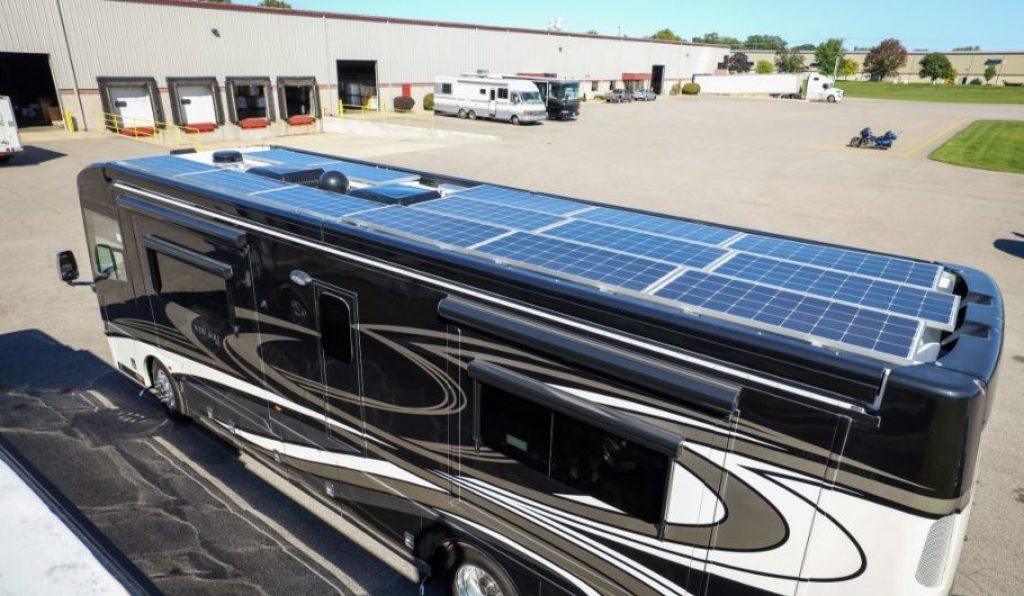
Source: https://mastertechrv.com/solar-3/
How Does An RV Solar System Work?
As previously mentioned, RV solar systems typically consist of solar panels, a charge controller, batteries, and an inverter. They work together as follows:
- Solar Panels: collect sunlight and convert it into electrical energy.
- Charge Controller: helps regulate the flow of electricity from the panels to the batteries.
- Batteries: store energy generated by the panels for immediate or later use.
- Inverter: converts the stored DC into AC that you can use to run RV appliances.
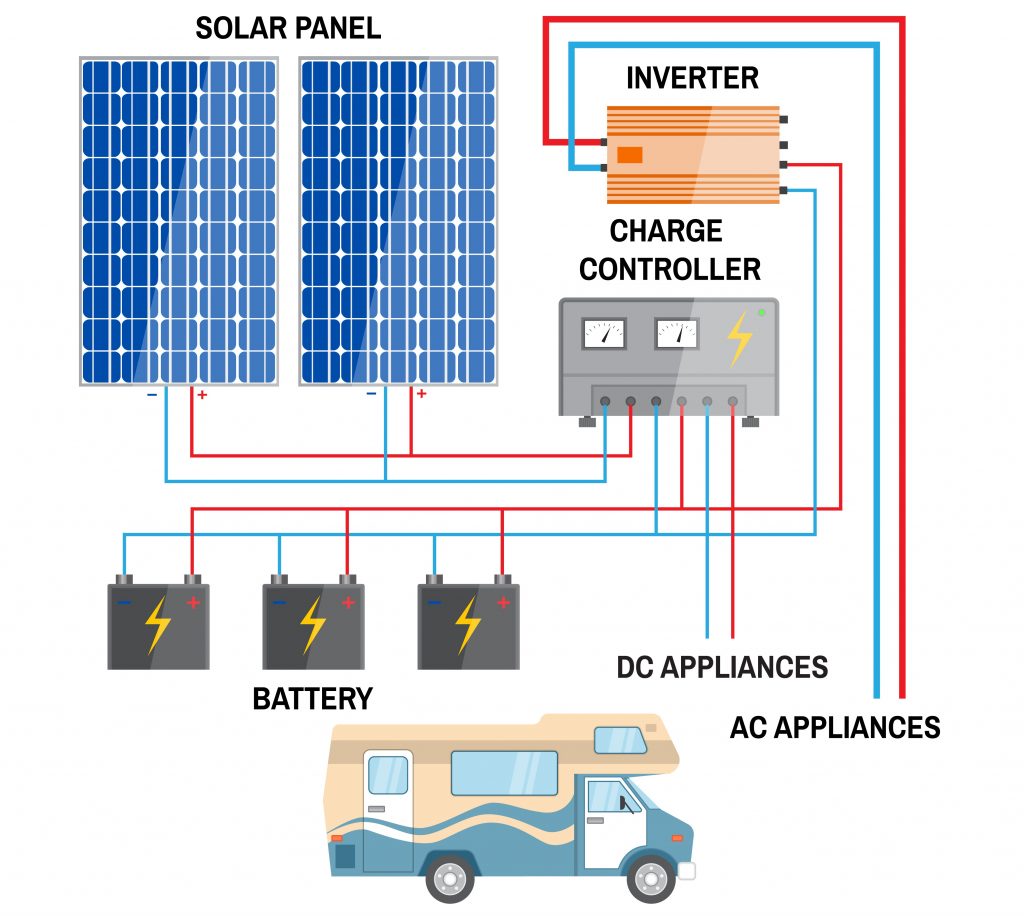
Source: https://rv-roadtrips.thefuntimesguide.com
What Components Does An RV Solar System Have?
The main components of an RV solar system include:
Solar Panels
There are a few things to consider when shopping for RV solar panels:
- Size: You’ll need to determine the size of the panels based on the amount of power you need to generate.
- Panel Type: you can choose between monocrystalline, polycrystalline, and thin-film.
- Price: the cost of your RV panels.
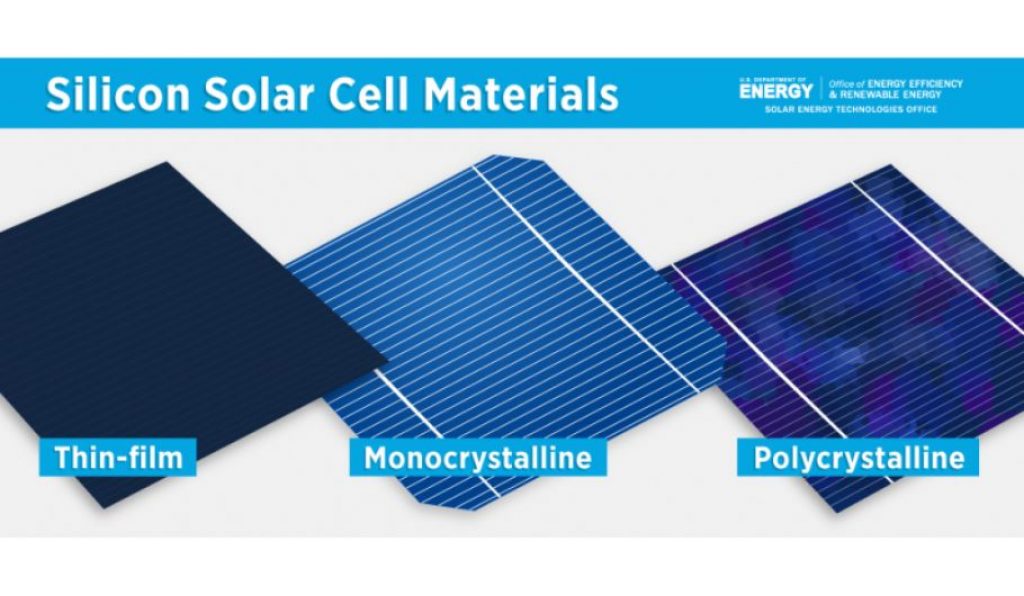
Solar Charge Controller
A solar charge controller regulates the charging of batteries from PV panels. It ensures that the batteries are not overcharged and damaged and protects against the reverse current flow and voltage spikes.
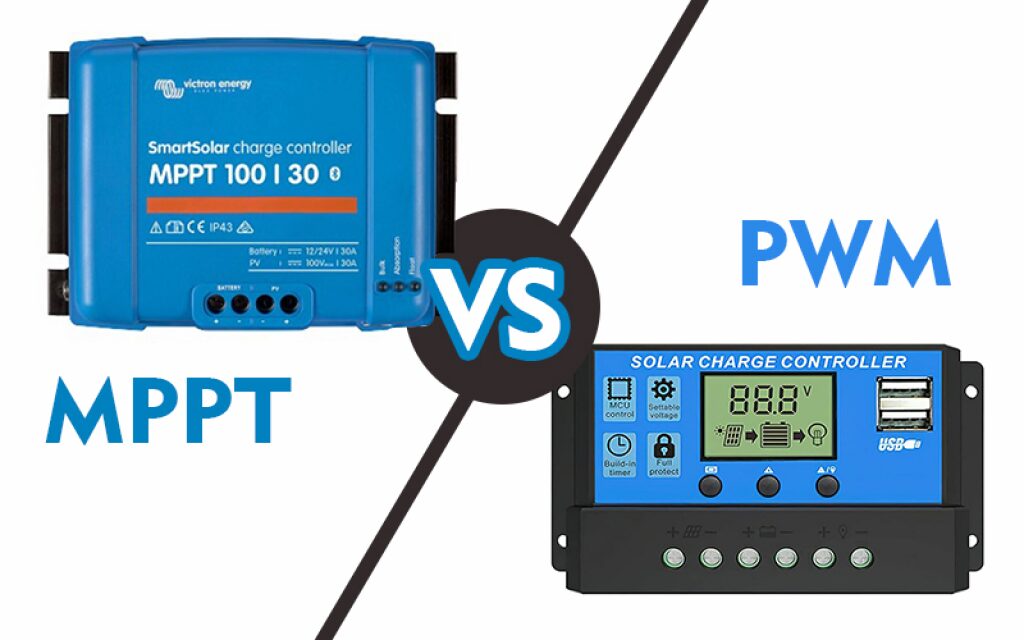
Solar charge controllers are available in different sizes and types, depending on the application. For example, simple solar charge controllers are used for small PV systems such as RVs, while more sophisticated models are used for larger off-grid systems.
Inverter
A solar inverter is a critical component in any RV solar system. It converts the DC power generated by the solar panels into AC power, which you can then use to run appliances and charge batteries.
A quality RV solar inverter will have a high-efficiency rating and be able to handle multiple loads without overloading the system.
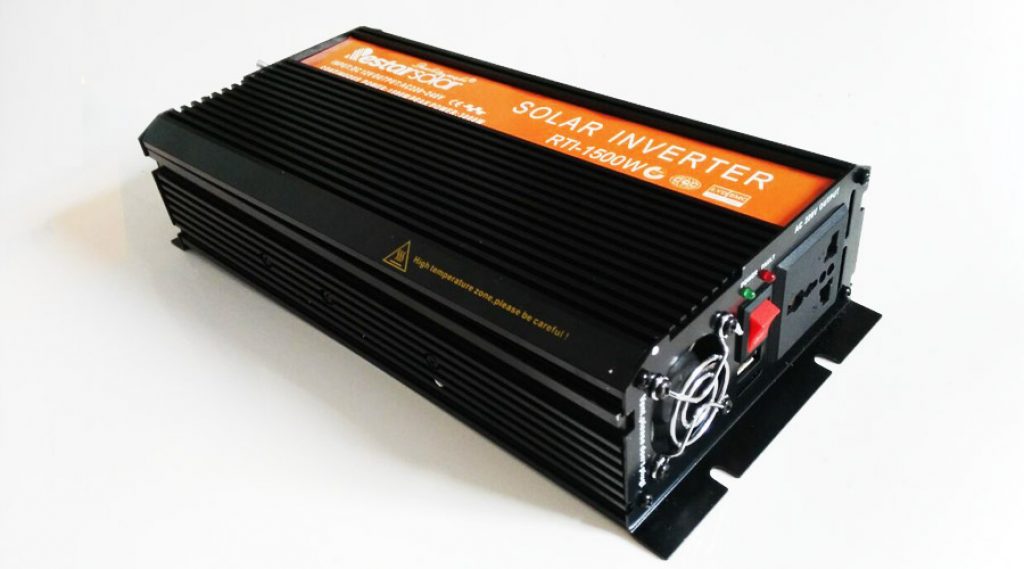
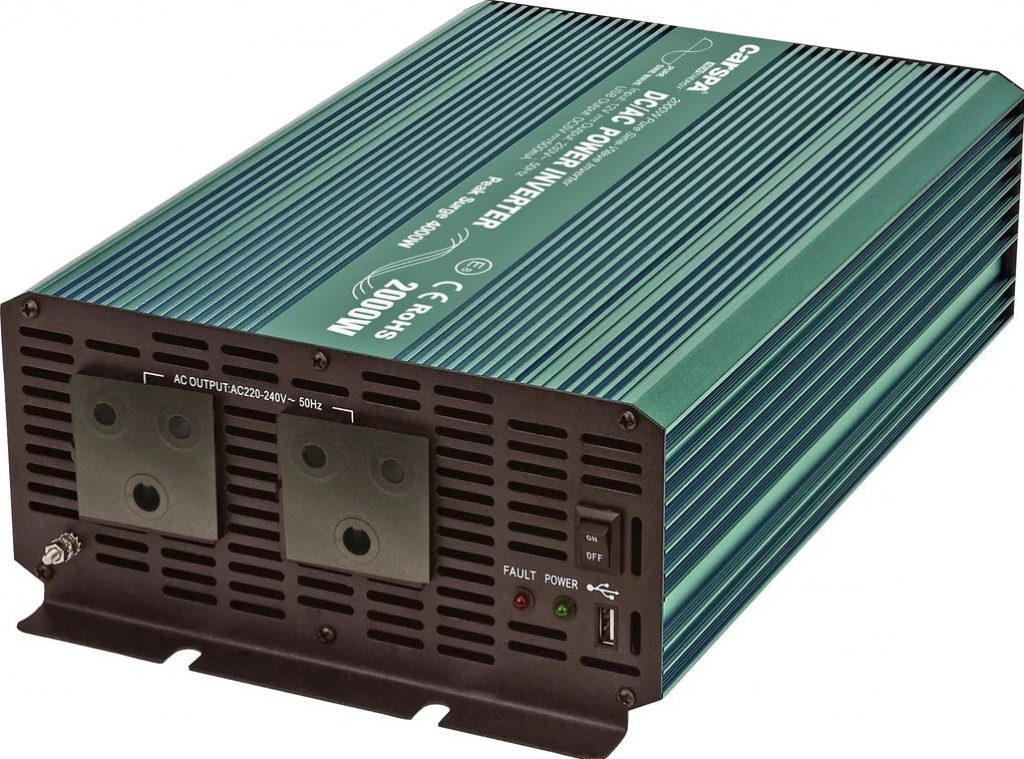
There are two main types of RV solar inverters:
Modified Sine Wave Inverters
These are the most basic and affordable types of inverters. They will run most appliances but may not be compatible with some sensitive electronics.
Pure Sine Wave Inverters
Pure sine wave inverters are more expensive, but they provide clean power compatible with all types of electronics. If you plan to run sensitive equipment like computers or TVs, then a pure sine wave inverter is a must.
Deep Cycle Batteries
Deep cycle batteries are another essential component of any RV solar system. These batteries are designed to be discharged and recharged regularly and can provide a reliable source of power for your RV even when camping in remote areas.
When choosing deep cycle batteries for your RV solar system, it is crucial to consider the battery’s total capacity and discharge rate.
Related Reading: What Are The Best Lithium RV Batteries?
What Can An RV Solar System Power?
An RV solar system can power various appliances and devices, including lights, computers, TVs, and refrigerators.
Many people install these systems because they allow them to live off the grid without relying on hookups for electricity.
When choosing an RV solar system, it is important to consider the size of your rig and the amount of power you will need.
RV Solar System Guide
How Many Solar Panels Does Your RV Need?
You will need a sizeable solar system if you plan to go off-grid. But how do you determine the number of solar panels you’ll require?
There are a few things to consider when sizing your RV solar system, including:
- The number of appliances you’ll be running.
- The average daily sun hours in your area.
- The power output of the solar panels.
What Size Charge Controller Does My RV Need?
There are a few essential variables to consider when selecting the size of your RV solar charge controller:
- The number of solar panels and their maximum amperage output. A good rule of thumb is to select a charge controller that’s at least 40% bigger than the maximum output of your solar panels.
- Size of your batteries — a larger battery bank will require a larger charge controller.
- The amount of power you’ll use (on average) and whether you’ll need to run additional devices off your solar system.
How Many Batteries Does My RV need?
Most RVs need at least two deep cycle batteries to run their essential appliances and devices. However, you may need three or four batteries if you plan on using more energy-intensive devices like air conditioners or washing machines.
Ultimately though, the number of batteries you’ll require comes down to:
- Size of your RV
- Number of applications you’ll be running off-grid
- Amount of sun you get on a daily basis
What Size Inverter Does My RV Need?
Solar panels produce DC (direct current), which means that an inverter is necessary to convert it into AC (alternating current) if you want to be able to use it to run your RV’s appliances and electronics.
So, how do you know what size inverter you need for your RV? There are a few things you’ll need to take into account, including:
- The type of appliances and electronics you’ll be running.
- The wattage requirements of those appliances and electronics.
- The number of hours you’ll be using those appliances and electronics per day.
Some appliances and electronics, like televisions and computers, require a continuous flow of power.
Toasters and coffee makers require only short bursts of power (known as “surge wattage”). You’ll need to consider both types of loads when sizing your inverter.
How To Design An RV Solar System
Solar energy is renewable, sustainable, and can save you money in the long run. But what do you need to know before you install a solar system on your RV?
Here’s a complete guide to designing an RV solar system, including everything you need to know about solar panels, batteries, and charging systems.
Let’s consider the following example.
1. Start By Calculating Your Power Needs
How much power do you use daily? This will help you determine the size of the solar system you need.
First, find the power (P) rating of the appliances. If the appliance is rated in amps (I), multiply the amps (I) by the voltage (V) to get the wattage (W).
The formula P = V x I is used to calculate the wattage.
Multiply the wattage of the appliances by the usage hours to determine the power consumption (Watt-Hour).
| Appliance/Load Name | Quantity | AC Watts | Surge Watts | Hours On/Day | Watt-Hours/Day |
|---|---|---|---|---|---|
| Lights | 4 | 15 | 15 | 4 | 240 |
| Dorm Size Refrigerator | 1 | 350 | 500 | 5 | 1750 |
| Laptop | 2 | 50 | 0 | 2 | 200 |
| Battery Charger (Cell Phone) | 2 | 25 | 0 | 2 | 100 |
| 440 W | 515 W | 2290 Wh |
2. Calculate The Battery Capacity You Need
If you need to power over 2000 watts at once, consider 24 or 48 volts.
We will use the watt-hour reading calculated in step 1 to determine the battery capacity.
For our example, let’s use the following variables for the battery capacity calculation:
| Battery Voltage | 48V |
| Days of Autonomy (Without Sun) | 3 Days |
| Depth Of Discharge (DoD) – LiFePO4 Battery | 80% |
| Inverter Efficiency | 92% |
| Temperature | 80 °F |
| Battery Temp Multiplier | 1.00 |
Step A: Calculate The Average Daily Watt-Hours
Average Daily Watt-Hours = ( AC Daily Wh ÷ Inverter Efficiency) + DC Daily Wh
Average Daily Watt-Hours = (2290 Wh ÷ 0.92) + 0 Wh
= 2489 Wh
Step B: Calculate The Battery Bank Capacity (Wh)
Battery Bank Capacity (Wh) = Average Daily Wh x Days of Autonomy x Battery Temp Multiplier ÷ DoD
Battery Bank Capacity (Wh) = 2489 Wh x 3 Days x 1.00 ÷ 0.8
= 9334 Wh
Step C: Calculate The Battery Bank Capacity (Ah)
Battery Bank Capacity (Ah) = Battery Bank Capacity (Wh) ÷ Battery Voltage
Battery Bank Capacity (Ah) = 9334 Wh ÷ 48 V
= 194 Ah
3. Sizing The Solar Panel Array
The number of sun hours available will determine how many solar panels your solar installation requires.
It’s essential to consider your area’s worst-case scenario when deciding on a solar array design.
Let’s proceed with the calculation. Assume the following variables:
| Available Sun Hours | 2.8 Sun Hours |
| System Efficiency Factor | 67% |
Step A: Calculate The PV Array Size
Minimum Array Size (W) = Average Daily Wh ÷ Sun Hours (Worst Case) ÷ System Efficiency
Minimum Array Size (W) = 2489 Wh ÷ 2.8 Sun Hours ÷ 0.67
= 1327 W
Next, you select the solar panel based on your desired brand. For this example, we selected a 315W panel with 24V nominal voltage.
Step B: Calculate The Number Of Panels
Total Number Of Modules = Minimum Array Size (W) ÷ Module Size (W)
Total Number Of Panels = 1327 W ÷ 315 W = 4.24
= 4 Panels
Step C: Calculate The Number Of Modules Per String
Number Of Modules Per String = Battery Voltage ÷ Nominal Voltage
Number Of Modules Per String = 48 ÷ 24
= 2 Modules Per String
Step D: Calculate the number of parallel strings needed
Number Of Parallel Strings = Total Number Of Panels ÷ Number Of Modules Per String
Number Of Parallel Strings = 4 ÷ 2
= 2 parallel strings
4. Choose A Solar Charge Controller
There are two types of solar charge controllers:
- PWM (Pulse Width Modulation)
- MPPT (Maximum Power Point Tracking)
PWM is the most common and typically the best choice for RV solar systems. PWM charge controllers are more affordable, more efficient, and easier to install.
MPPT is typically only necessary if you have a very large solar array or live in an area with low light levels.
Be sure to choose a solar charge controller compatible with your solar panels’ voltage and amperage. The battery you use will also determine which solar charge controller you need.
If you use a lead-acid battery, you will need a PWM controller, whereas a lithium-ion battery allows you to use either a PWM or MPPT controller.
Now, let’s continue with our example. We assume the following values based on the 315W panels.
| Voc (Open Circuit Voltage) | 45.9 V |
| Isc (Short Circuit Current) | 9.16 A |
| Safety Factor | 1.25 |
Minimum Current Capacity = Total Number Of Series Strings x Short Circuit Current x Safety Factor
Minimum Current Capacity = 2 x 9.16 x 1.25 = 22.9 A
We can now select a charge controller with a current rating higher than 22.9 A.
5. Selecting An Inverter For Your RV Solar System
You must size your inverter to account for all the devices that may be on at once. Additionally, you must consider the possibility of power requirement spikes.
Your inverter should handle 440 Watts continuously based on our load list in step 1. Please do not include any DC loads, as they will run directly from the battery and not through your inverter.
When adding up the surges that may come on at once, they total 515 watts. Therefore, make sure your inverter can handle this power before purchasing one!
Is An RV Solar System Worth The Cost?
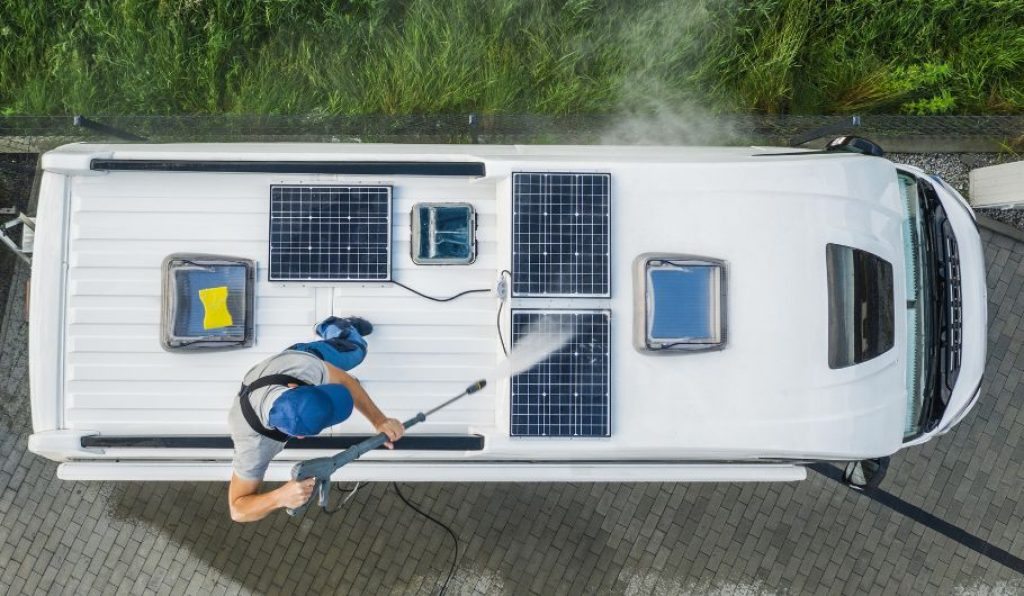
RV solar systems are becoming more popular as RV owners look for ways to reduce their reliance on hookups and generator power.
But is an RV solar system worth the cost? The answer depends on several factors, including:
- How frequently you go camping;
- Your RV type; and
- Your power requirements.
If you camp frequently or dry camp often, an RV solar system can be worth the cost. Remember. RV solar systems provide a convenient and sustainable way to power your RV, and they can ultimately save you money on your camping costs.
If you have a larger RV or require more power for things like air conditioning or cooking, you’ll need a more powerful RV solar system, which will be more expensive. However, the initial investment can be offset by the long-term savings on your camping costs.
Ultimately, whether an RV solar system is worth the cost is up to each RV owner. Consider your power needs and how often you camp when making your decision.
Final Thoughts
Installing an RV solar system is a great way to reduce your reliance on hookups and generator power. Solar systems are becoming increasingly popular as RV owners look for ways to camp sustainably.
When designing your RV solar system, be sure to size your components correctly and choose products that are compatible with each other.
An RV solar system is a significant investment, but it can be a great way to save money on your camping costs in the long run.
Happy RV solar camping!

